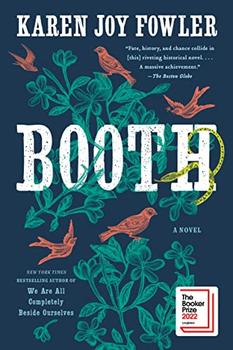Summary | Excerpt | Reviews | Beyond the book | Read-Alikes | Genres & Themes | Author Bio

Critics' Opinion:
Readers' Opinion:
First Published:
Apr 2023, 384 pages
Paperback:
Apr 2024, 384 pages
 Book Reviewed by:
Book Reviewed by:
Kathleen Basi
Buy This Book
On the night of December 26, 1811, residents of Richmond, Virginia crowded into the local playhouse, not knowing that in a few hours, 72 of them would be burned to death. In Rachel Beanland's The House Is on Fire, we meet four characters who experience that night and its aftermath in deeply personal ways.
Sally, a white widow committed to the well-being of her sister-in-law (who is injured in the fire), is outraged at the treatment of women in the place and time in which she lives. Gilbert, an enslaved Black man who thirsts to make a way for himself and his wife as free people, faces the crisis at the theater with true heroism. Cecily, an enslaved Black woman, companion to a wealthy white woman and the object of desire of her mistress's sadistic brother, sees the tragedy as an opportunity. And Jack, an orphaned white teen, is one of the few who knows how the fire started, but faces ...

BookBrowse's reviews and "beyond the book" articles are part of the many benefits of membership and, thus, are generally only available to subscribers, including individual members and patrons of libraries that subscribe.
Join Today
If you liked The House Is on Fire, try these:

by Leyna Krow
Published 2023
The propulsive story of three scheming opportunists - a banker, a conman, and a woman with an extraordinary gift - whose lives collide in the wake of a devastating fire in the American West.

by Karen Joy Fowler
Published 2023
From the Man Booker finalist and bestselling author of We Are All Completely Beside Ourselves comes an epic and intimate novel about the family behind one of the most infamous figures in American history: John Wilkes Booth.





The House on Biscayne Bay
by Chanel Cleeton
As death stalks a gothic mansion in Miami, the lives of two women intertwine as the past and present collide.

The Flower Sisters
by Michelle Collins Anderson
From the new Fannie Flagg of the Ozarks, a richly-woven story of family, forgiveness, and reinvention.

The Funeral Cryer by Wenyan Lu
Debut novelist Wenyan Lu brings us this witty yet profound story about one woman's midlife reawakening in contemporary rural China.
Your guide toexceptional books
BookBrowse seeks out and recommends the best in contemporary fiction and nonfiction—books that not only engage and entertain but also deepen our understanding of ourselves and the world around us.